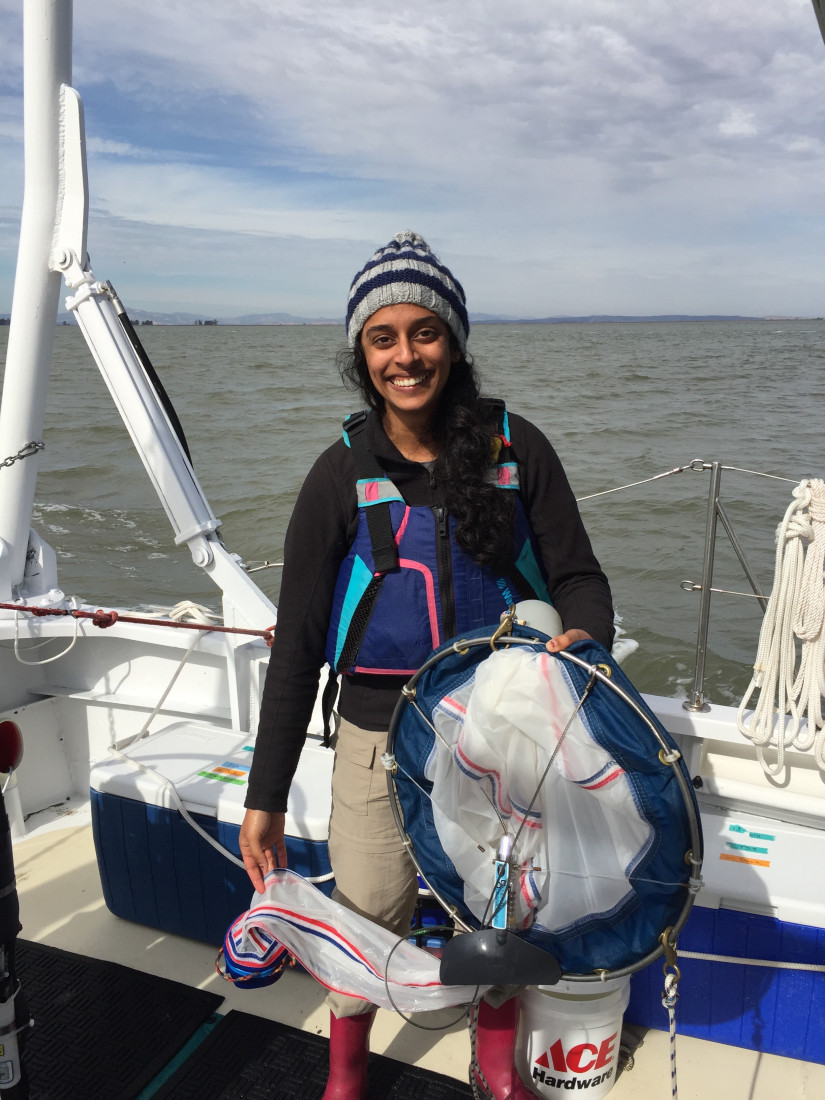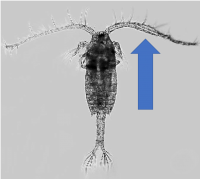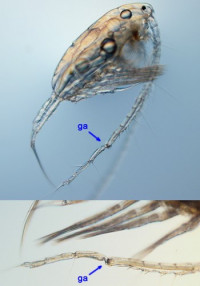What do you think of when you read “river”?
Do fish come to mind? I bet they do for many people. Rivers and sloughs are home to legendary fish like migrating salmon, mysterious sturgeon, and primeval lamprey.
During graduate school, I would zoom around waterways of the Sacramento-San Joaquin River Delta, on my way to a research site to collect samples of zooplankton—the component of plankton made up of tiny animals and immature stages of larger animals. Along the way we would often slow our speed before our wake could disturb recreational fishing boats. Some fishermen would wave and upon seeing the “research” label alongside our hull, they would ask what we were studying. It was a perfect moment to connect our interest in zooplankton with theirs in fish. When we resumed our high-speed travel, I would wish we could have continued the conversation and raised appreciation for zooplankton beyond their role as fish food in the delta.
You may think that I am biased in my high opinion of the tiny creatures that are beholden to shifting currents, but zooplankton are impressive despite their microscopic size. For example, did you know that copepods, a type of zooplankton, are the fastest animal on earth, able to accelerate to 500 body lengths per second. Feel free to pull that one out for your next cocktail party.

When I joined the Delta Science Program for my California Sea Grant fellowship, I thought my enthusiasm for zooplankton would be nothing out of the ordinary. Well, it was not extraordinary, but it was niche. Thankfully, early on I joined the Zooplankton Synthesis Working Group, which my fellowship mentor founded and has since passed on to new management. The group is still active, and when I entered the conversation, they were in the midst of conceptualizing a zooplankton ecology symposium. Over several months, with the dedication and hard work of our group lead, we developed an impressive program and a list of rock star speakers that spanned the country. A feat made possible by our virtual venue. The symposium was a valuable opportunity for zooplankton researchers to freely indulge in their excitement over new zooplankton monitoring technology (ranging from low-cost paper microscopes to plankton-sensing robots and autonomous underwater vehicles), recent field research, and more. Now, if you’ve made it this far, you’ve probably guessed that I’m going to start throwing down some interesting zooplankton knowledge, with hope in my heart that you, dear reader, can walk away appreciating these tiny critters as more than just fish food.
1. Zooplankton play a role in carbon sequestration
In aquatic environments, phytoplankton, microscopic algae, can be found floating along with currents and using photosynthesis to transform carbon dioxide into energy. Zooplankton eat the algae and move the phytoplankton’s carbon into their digestive system and finally back out as fecal pellets. (We in the biz call this zoop poop.) If the fecal pellet is large enough, it will sink like a rock toward the ocean floor and once that zoop poop has sunk below 1000 meters, the carbon it contains is functionally pulled out of the carbon cycle and sequestered. The question then remains: how much carbon do zooplankton passively sequester through their fecal pellets? You can learn more with Karen Stamieszkin, a biological oceanographer who presented her work on this topic at the zooplankton ecology symposium.
2. Zooplankton create their own miniature water current to capture food
If you ever look at a copepod under a microscope, you’ll see that this pill-shaped zooplankton has complex anatomical features. From antennae as long as the copepod’s body to countless pairs of legs, each feature is specially adapted to give the copepod its best chance for survival, and that includes finding its next meal. When a pair of appendages around the copepod’s head oscillate, they create a tiny water current, and when this behavior is paired with swimming, the copepod increases its chances of encountering food particles. Small hair-like sensors, setae, on the copepod’s appendages are equipped with chemical and mechanical sensors, so when unappetizing particles enter their feeding current, the copepod can detect them and promptly kick those bits away. An important ability when toxic cyanobacteria float into their current. The takeaway? These tiny creatures were meta before it was cool, creating tiny currents within the currents they roam on.
3. Adult male and female zooplankton can be identified fairly easily

You don’t believe me, and that’s okay. There was a time when I would have balked over the prospect of figuring out if one of these tiny creatures is male or female. Let me guide you through the process, using a San Francisco Estuary species, Pseudodiaptomus forbesi. This copepod species came to California in the 1980’s likely through ballast water, and since then has been adopted as an important food source for native fish. (Sorry, zooplankton being fish food is an unavoidable topic!) Now, let’s examine the following four photos. Photo (a) is a female. You can see the two egg sacs hanging off either side of her body. Photo (b) is also a female, and when they don’t have egg sacs, you can look for a prominent bump on their tail segment. This bump is called a genital somite and has a dark dot on it. Finally, photos (c) and (d) show male copepods and points out their geniculate antenna. Generally, male copepods in the order Calanoida have that funky right antenna that is subtly plumper than the left. It also has a tiny pinched point where the antenna bends. Find that plump bent antenna and you know you’re in the presence of a male P. forbesi. Easy, right?....Right?


How was that for a tiny window into the gargantuan world of zooplankton? Scientists, including myself, have dedicated a lot of time and effort toward catching, counting, and studying these tiny critters, but even after decades of research, we have more to learn. Something as simple as “what does a copepod eat?” is a difficult question to answer. But as new techniques are developed, we continue tackling knowledge gaps in the Bay-Delta and beyond.
If after reading all that, you are still feeling ambiguous about zooplankton, no big deal. As long as you can entertain the fact that these seemingly invisible “bugs” are a vital piece to our planet’s overall health, I’ll be happy.
To watch the recorded Zooplankton Ecology Symposium, day one and day two are both available online.




